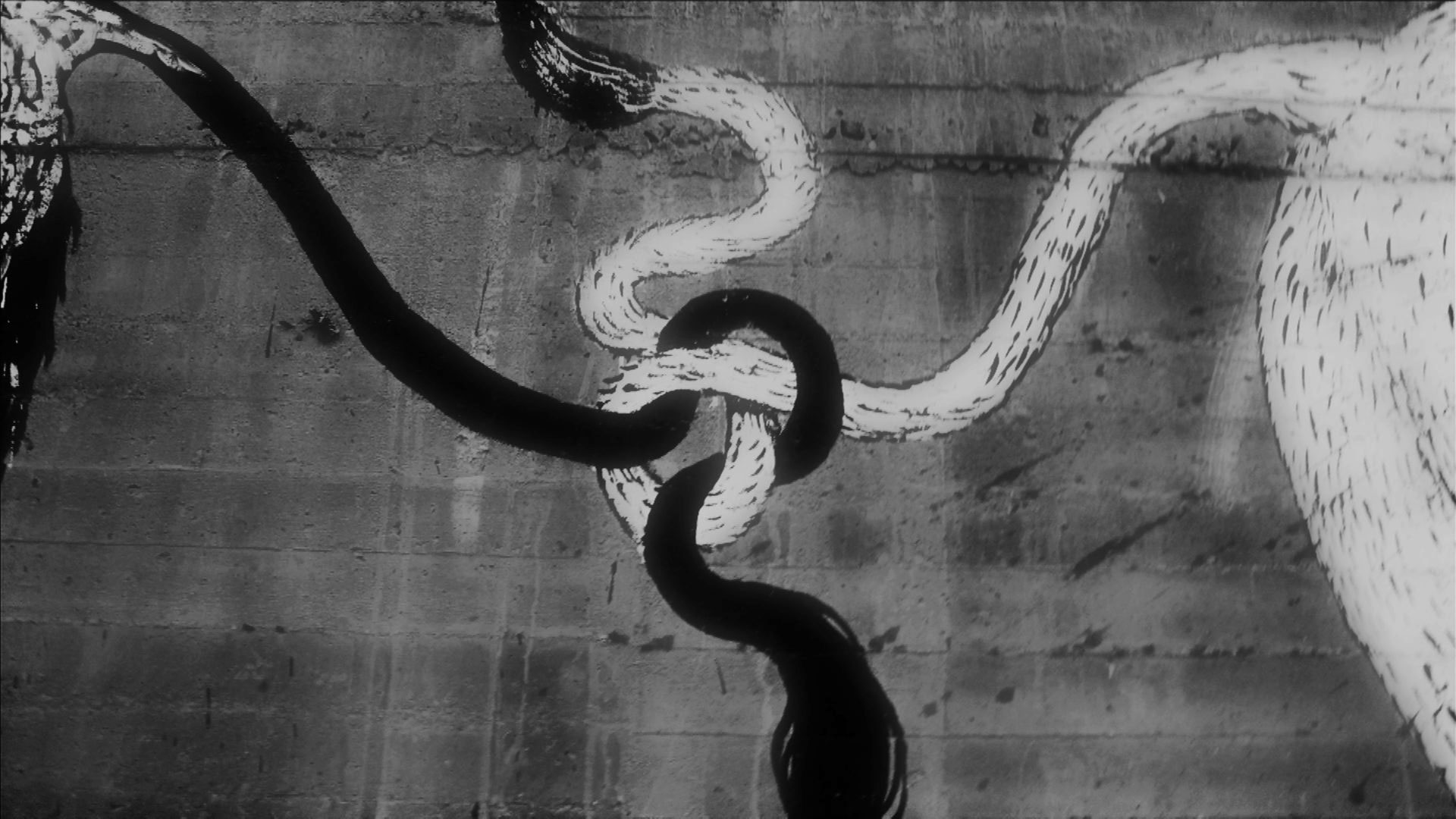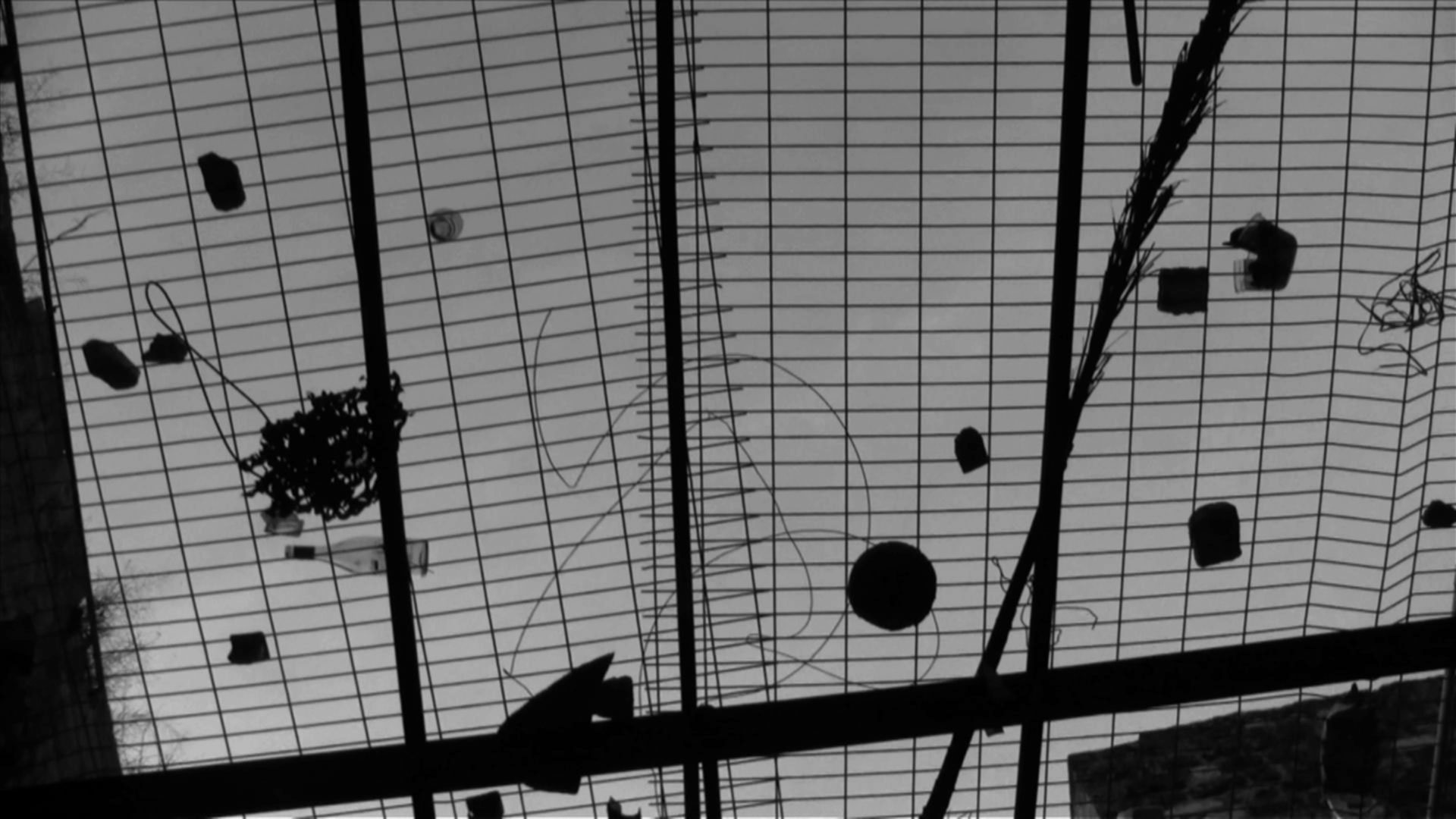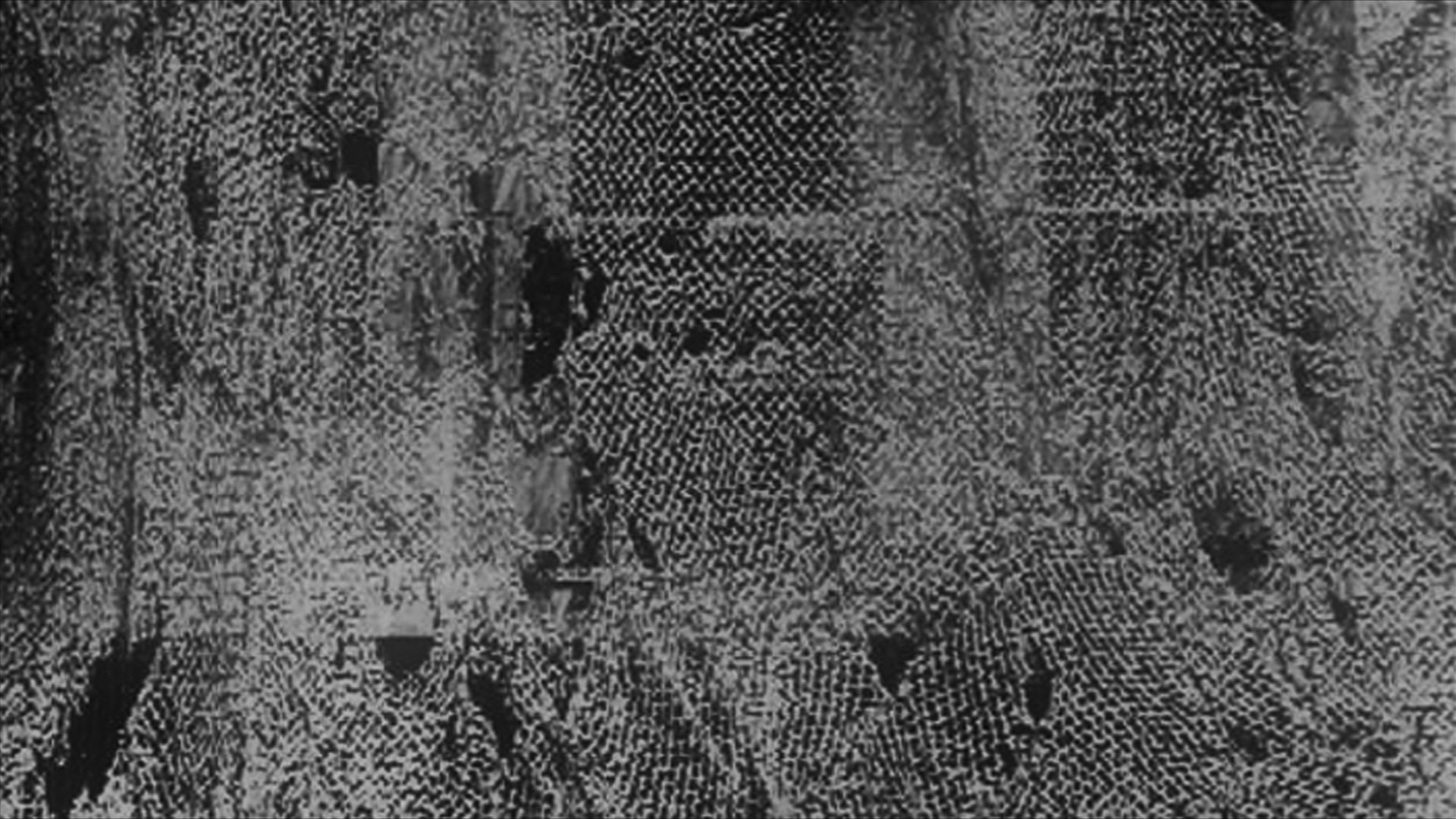Around the Cave of the Double Tombs
16:45 min, b/w, silent, 2010
Lina Selander’s work Around the Cave of the Double Tombs takes its starting point in several research trips to the West Bank, especially to the city of Hebron. We are confronted with photographs, and with still images, depicting – in a rather abstract and distanced manner – various situations: a model of ancient Jerusalem in a museum, a checkpoint with its massive security architecture squeezed into a historical building, houses, walls, objects. In between, sequences of moving images appear that show a chain link fence above a shopping alley in Hebron, built to protect Palestinians from settlers throwing stones at them. The continuous, but halting, camera movement facing the horizontal fence disturbs our perception and sense of orientation and, as Lina Selander states, “gives the place a vertical dimension: earth and soil – buildings and people – sky, air and dreams.” Still and moving images alternate with short texts, establishing a rhythm that does not only connect – without always explaining – what is seen, but also introduces a narrative that articulates the interrogation of image and text. Contrary to a conventional image of Palestine and the conflict as emphasized – and exploited – by the mass media and contrary to dominant documentary practices, Selander turns away from a documentary exposition and instead “reflects on and projects layers of control, dream and confinement, both in relation to the place and its history and to problem of showing and saying it” (Selander). Selander’s Around the Cave of the Double Tombs is concerned with questions of representability and the possibility of film to interact with a specific reality, a reality that is otherwise experienced in a very specific set of conditions. It is through a renunciation to speak on behalf of someone or to represent someone or a specific objective, but instead to focus on the ontological status of image and text in film that Around the Cave of the Double Tombs unleashes its potential of letting the real shine through, or, as one of the text panels states: The real is cut and re-assembled, returning with a different origin.
Text: Felix Vogel, curator Bucharest Biennale 4
Credits:
Script: Lina Selander and Oscar Mangione
Text: Lina Selander, Fredrik Ehlin and Oscar Mangione
Arabic translation: Henry Diab
Camera: Lina Selander
Editing: Lina Selander and Oscar Mangione
Watch film:
https://vimeo.com/243336
























